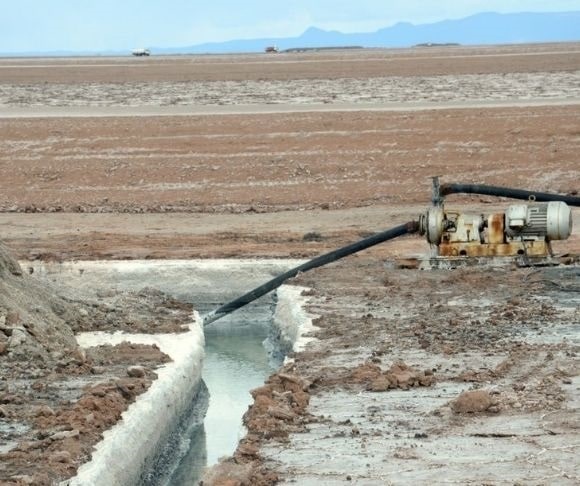The renewable energy transition relies on a soft metal called lithium. It isn’t all that rare, but it can be hard to get. Few locations hold the key to our technological advancements and climate change agenda, and there’s no quick fix to producing the lithium-ion batteries companies like Tesla and Rivian fight over. Will the limited supply chain be able to sustain our rapidly mounting need as prices skyrocket?
Where Does Lithium Come From?
 Despite our planet hosting plenty of lithium – at least for now – it isn’t easy to get our hands on it, as it exists mostly in trace amounts in tough-to-reach areas. The element is found in seawater, different kinds of rocks, and aquifers below salt deserts. South America is a hub for the resource, and Chile holds the largest known lithium reserves at eight million tons. The total known global reserve sits at 14 million tons. To put this number in perspective, the worldwide demand for lithium was 350,000 tons in 2020.
Despite our planet hosting plenty of lithium – at least for now – it isn’t easy to get our hands on it, as it exists mostly in trace amounts in tough-to-reach areas. The element is found in seawater, different kinds of rocks, and aquifers below salt deserts. South America is a hub for the resource, and Chile holds the largest known lithium reserves at eight million tons. The total known global reserve sits at 14 million tons. To put this number in perspective, the worldwide demand for lithium was 350,000 tons in 2020.
Biden’s Investment
The United States is home to only 2% of the world’s lithium. We have one active mine in Nevada, but it doesn’t host nearly enough to meet our country’s needs even without President Biden’s agenda.
To meet the president’s renewable energy and EV goals, we’ll need lithium to be mined at a much higher rate. The demand is expected to rise by 900% by 2030 and 4,000% by 2040 globally, with the United States being a driving force. As a result, President Biden announced a $3 billion investment Monday to boost our country’s supply of lithium ion batteries for electric vehicles via the bipartisan infrastructure package. As the war between Russia and Ukraine continues to disrupt global oil markets, government officials hope this will make the US more energy-autonomous while combatting climate change.
The infrastructure bill allocated $7 billion to assist the battery supply chain in the US by lowering costs, speeding up production, and averting disruptions to the market. Three billion dollars will be used for producing and recycling critical minerals for batteries, like lithium, but the United States will make no new moves on extracting from mines or sourcing materials.
Searching for Solutions
Tesla and Twitter’s Elon Musk recently signaled his company is in dire need of lithium. Due to its “insane” skyrocketing price, Musk says Tesla may start independently mining for it. But he’s not the only EV boss searching for solutions.

(Photo by Georg Ismar/picture alliance via Getty Images)
Rivian’s CEO R.J. Scaringe shared, “Put very simply, all the world’s cell production combines represent well under 10% of what we will need in 10 years, meaning 90% to 95% of the supply chain does not exist.” Essentially, Scaringe explained that the entire industry has to be built from scratch. China dominates the existing low-operating market, and the United States and world leaders alike have recognized the opportunity and need to make moves and procure energy security.
However, this “key to climate change” and a necessity for renewable energy, at least by current technological standards, comes with a couple other issues. First, it is a finite resource. The 14 million ton known reserve would have lasted 165 years at 2018’s demand. But at 2020’s 350,000 tons, it would only last 40 years. It would be gone in just over four years if we had 2030’s estimated demand – and by 2040, we’re expected to need the full 14 million tons all at once. And all that assumes the predictions are correct; actual demand could be lower – or much higher. Recycling could eventually relieve some of that strain, but only if demand levels off.
Of course, that’s just the known reserves. Estimates of Earth’s actual reserves of lithium vary wildly, ranging from those who think there are 40 million tons to those believing it’s more like 95 million. Even if there’s plenty, however, getting to it is still a problem. It would likely take a decade or more to get a new mine in the US actually running and producing. Environmentalists who want to rid the world of “dirty energy” and do everything they can to combat climate change may need lithium to do it, but the mining process can threaten endangered species, damage local ecosystems, cause biodiversity loss, contaminate the air, and ruin the soil. For some, it’s a worthwhile trade. They believe the impact of mining lithium will have fewer adverse effects than the processes it replaces, like fracking or burning coal. But another question to consider is where all that lithium we don’t know about actually is. If it’s hidden away well enough we haven’t been able to find it, how hard – and environmentally damaging – will it be to extract if we do find more?




